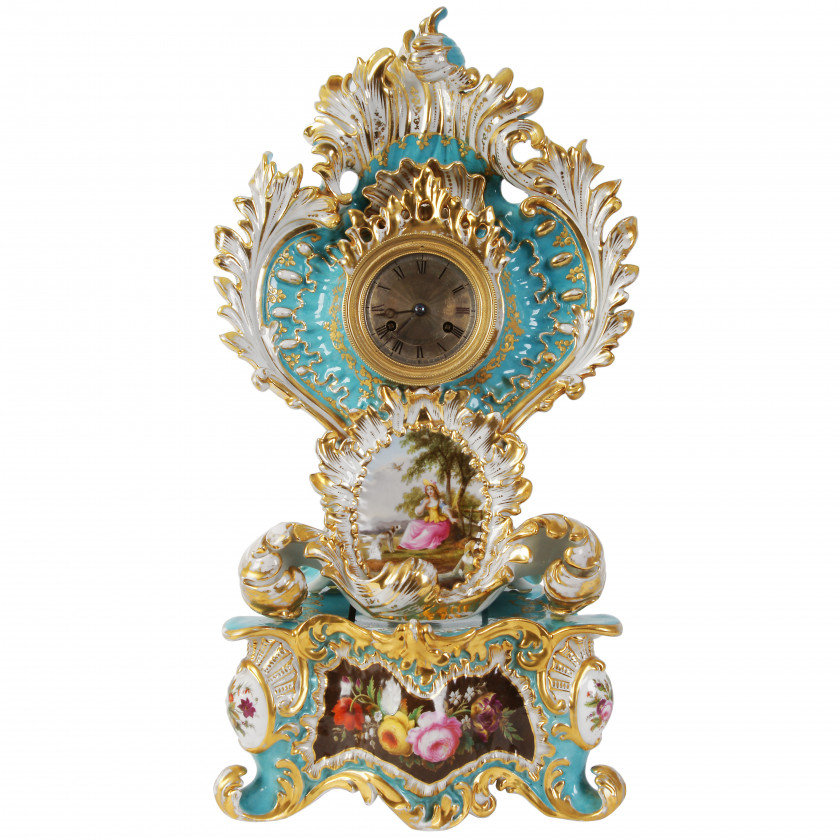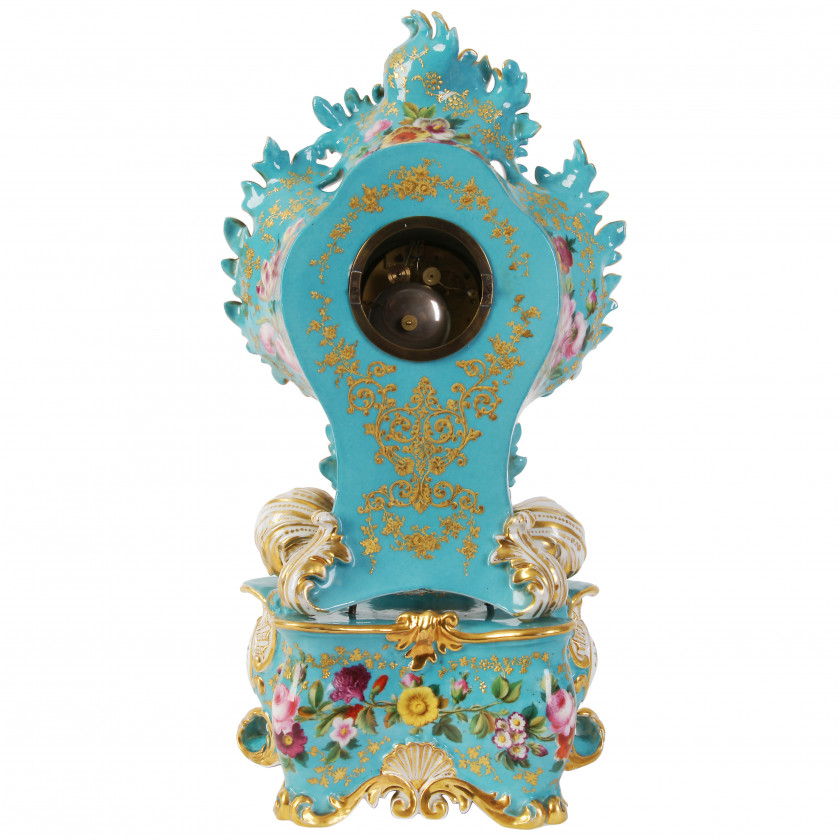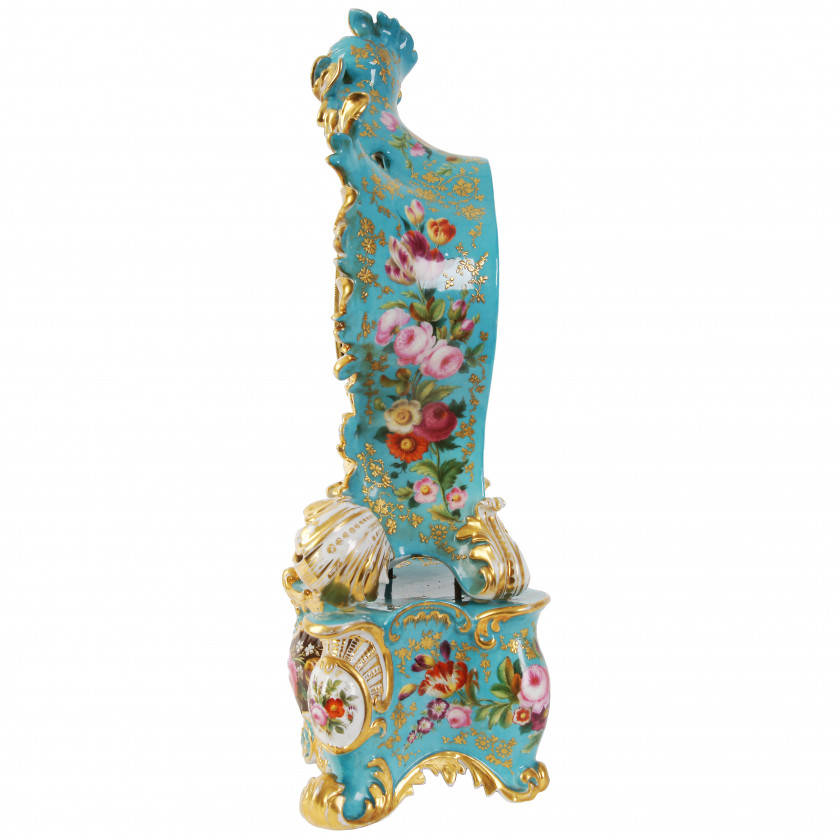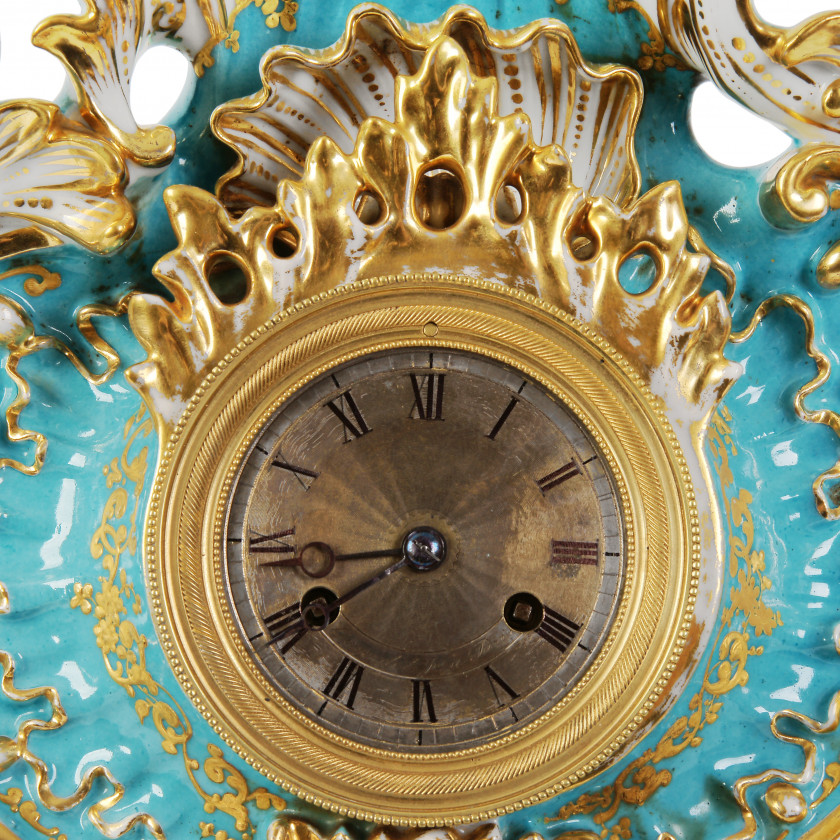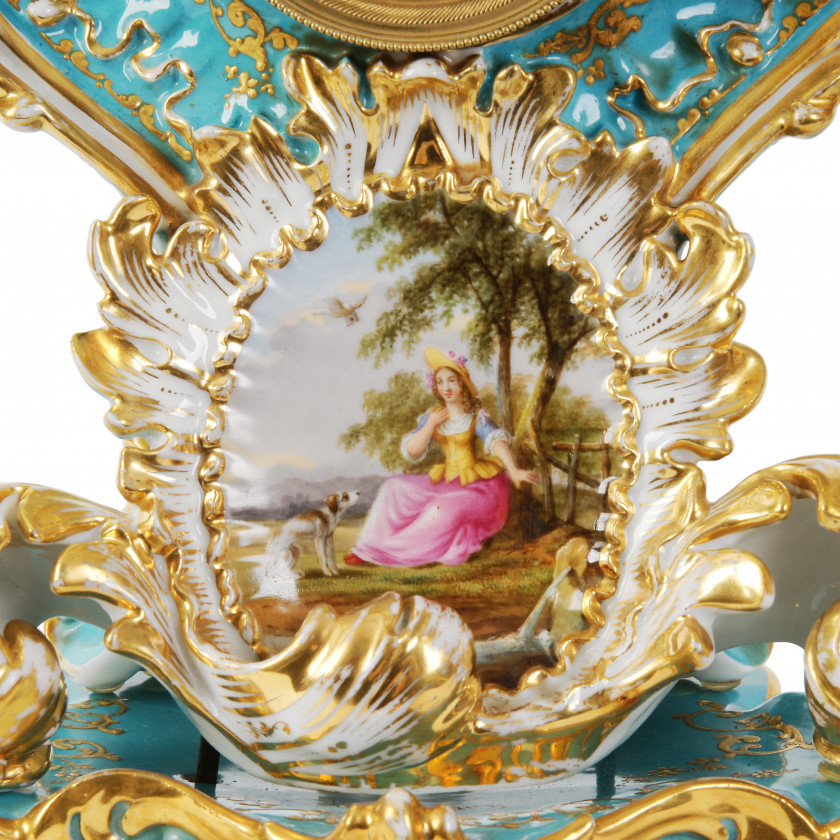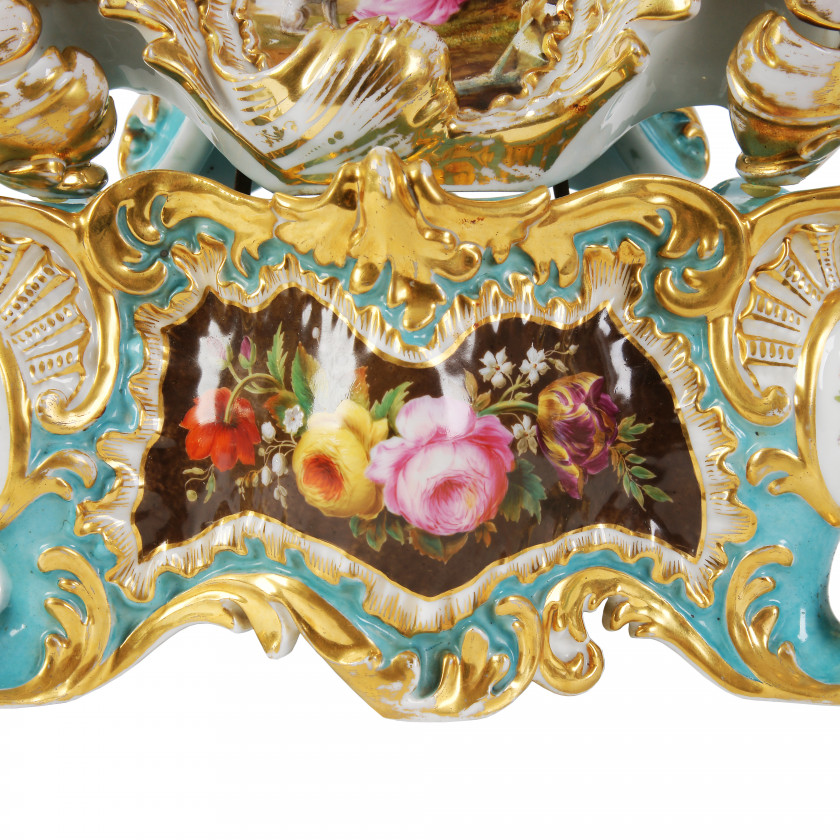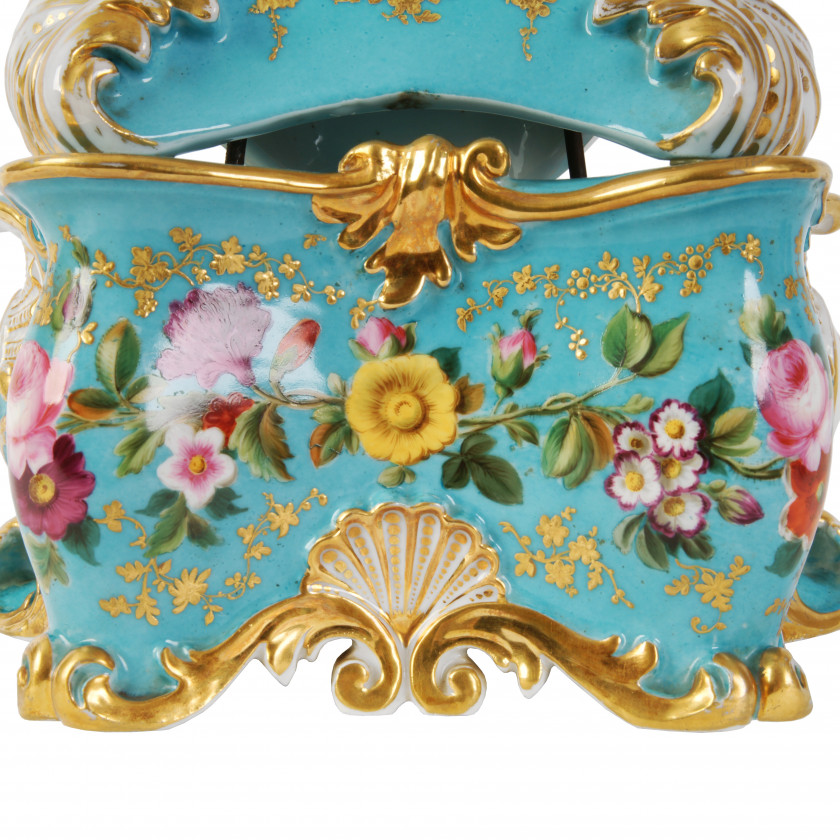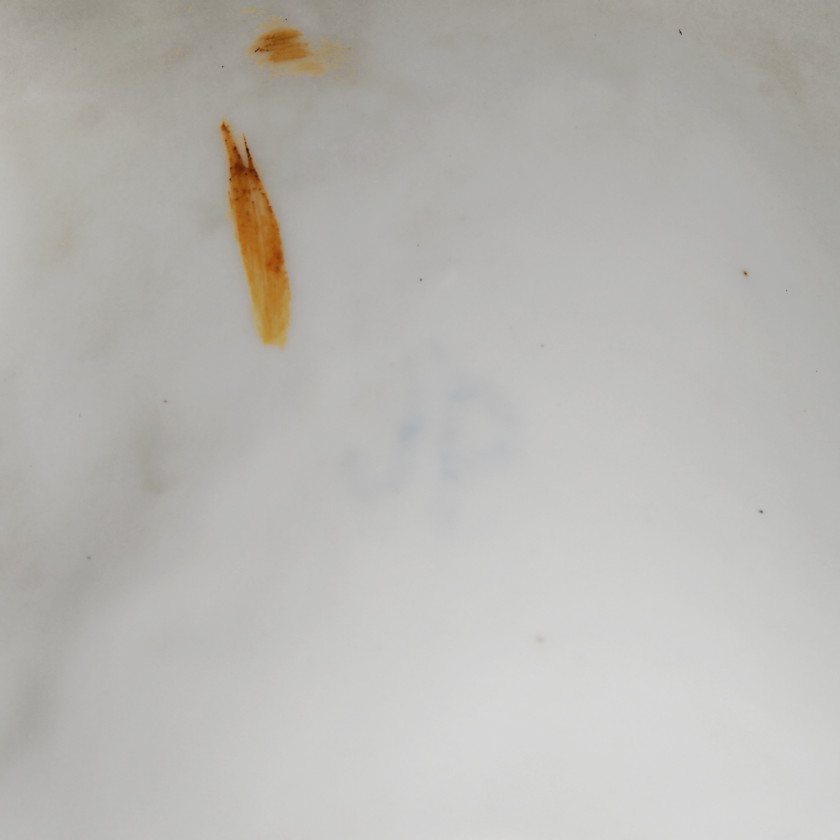Porcelain mantel clock on a base
-
2,300 EUR
Artist/Maker: Guyerdet J. Paris, Jacob Petit
Artist/Maker Dates: 1830 - 1868
Place of Production: France, Fontainebleau
Date of Production: 1830s
Materials: bronze, gilding, porcelain, underglaze hand painting
Width: 26.0 cm.
Depth: 17.0 cm.
Height: 51.5 cm.
Condition:
Condition notes: In working condition, two leaves restored, wear consistent with age and use
Description
In the 1830’s, while Parisian porcelain makers and decorators continued
to create models that reinforced the neo-classic style, Jacob Petit
(1796-1868) went against tradition and proposed objects with a wide
variety of styles and decoration. His surprisingly extravagant
production appeared when the art of the porcelain industry was falling
into decline, and its success gave fresh energy to the
decorative porcelain trade.
Born in Paris in 1796, Jacob
Mardouché (who went by Petit, the last name of his wife, Anne Adelaïde
Petit) studied painting in Antoine Jean Gros’s workshop. In 1820, he
earned his certification as a porcelain manufacturer. He made several
journeys to Italy, Switzerland and Germany before settling down for a
few years in England, where he studied various industries and painted
stage sets.
Petit returned to France around 1830-1831 and
published an important interior design collection composed of hundreds
of drawings depicting models of vases, furniture, chairs, and silver and
bronze objects. His tome presented a variety of previous styles, with
an obvious preference for Antiquity and Gothic styles. After a short
period at Sèvres, he opened a small workshop in Belleville.
His
success was fast and spectacular, and in 1833 he bought the porcelain
factory of Baruch Weil at Fontainebleau. The factory was appreciated by
Louis XVIII, Charles X and the Duchess of Berry. He also owned a
decoration workshop in Paris at 26 Bondy street.
In 1846, he and
his partner, Nicolas Moriot, a painter at the royal factory of Sèvres,
opened a small porcelain factory there. Five years later, he moved his
Fontainebleau factory to Avon and then sold it in 1862 to one of his
employees, Etienne Jacquemin.
Petit’s factory was one of the most
famous ones in existence between 1830 and 1860, and its production was
rich and varied. After 1838, it limited its production to ornamental
objects: flasks, perfume bottles, clocks, perfume burners, paperweights,
vases, candlesticks, and small statues.
Beginning in 1834, Petit
displayed his work at the Industrial Exhibitions, and then at the World
Fairs. His remarkable objects and their technical innovations earned
him many awards. His work is eclectic, within which we can find Gothic,
Renaissance, Neoclassicism and Rococo styles, as well Far and Middle
Eastern motifs. These styles and motifs are at times combined, and at
times alone.
Because of Petit’s journeys abroad, in central
Europe in particular, foreign influences are evident in his work. While
abroad he studied an unusually exuberant Rococo style that he imposed on
his contemporaries in France upon his return.
During the
Romantic period, this artist with an unbridled imagination created
“strange” Rocaille forms that were easily recognizable on the Paris
porcelain scene. His Rococo patterns decorate angles, curved, and flat
surfaces. The animated forms, high reliefs, foliated branches, birds,
flames, flowers, and fruits all composed a luxurious style that was
completely different from the austere patterns represented in classic
art.
Clocks are particularly representative of this change in
taste. Richly decorated with multicolored flowers, Rocaille, and winding
foliage, they offer a fine example of the Central European Rococo
influence.
Among Petit’s successes were the “snowball” vases,
which were the glory of Meissen, Germany from 1730 to 1750. Petit gave
his imagination free rein and created small vases that were completely
covered with tiny, white flowers that were executed with meticulous
care.
Another example of the profound influence that eastern
European porcelain had on Petit are the small, multicolored statues
representing different characters from the Louis XV and Saxony courts.
He also created musicians, shepherds, shepherdesses, and animals. These
ornamental figurines sometimes serve a utilitarian function, ingeniously
hiding flasks, inkwells, paperweights, or matchboxes.
Inspired
by 18th century painters and decorators, Petit used the same bright
colors for his decorations. Multicolored flowers in relief and scenes
with characters from different countries and periods are accentuated by
black, turquoise, bright green, or amaranth backgrounds. The liveliness
of the colors is complimented by the exuberance of the gilding.
Shipping details
- Log in to see the cost for shipping this lot to your address.
Shipping methods are determined by item size, type, fragility and specific characteristics.
Shipping costs are calculated based on carrier rates, delivery distance and packing complexity.
Payment details
Doma Antikvariāts accepts the following payment methods:





